Adventures in Baby Making as a Single Black Lesbian
feature image via shutterstock
They say parenthood is full of surprises. They say it changes you in ways you’d never expect. They neglected to mention, however, that the path to parenthood itself can also change you and is full of surprises as well. I never thought I’d be trying to get pregnant. If you had told fifteen-year-old me that I would not only allow sperm inside me but that I would also pay thousands of dollars for said sperm, I’d have laughed you off the face of the planet. One, I have a very visceral negative reaction to even the idea of semen. And two, while I find pregnancy fascinating and beautiful, the idea of tiny fingers caressing my ribs from the inside freaks me out.
So how is it that I’ve found myself setting aside a couple of hundred dollars each month for the purpose of buying sperm and hopefully getting pregnant? A weird synergy between my identities and realities — a mix of being poor, having anxiety, being a queer person of color, and society’s biases against my identities — lead me to my current baby making path.
Whether or not I’d become a parent was never a question for me. I knew that I would be a parent as instinctively as I knew that I loved girls. I can’t recall a time when I wasn’t aware that I wanted a kid or that I was enamored with girls. It was my relationship with my own mother that inspired me to become a parent. My mother and I were always very emotionally close, I’ve always been able to talk about pretty much anything with her without fear of being judged and she has always been willing to hear me out when my desires conflicted with her parenting decisions. We’ve also always been physically close, lots of snuggling, lazy back rubs, and tickle fights. I’ve always known that I wanted to share a similar kind of relationship with a child of my own someday.
My discomfort with pregnancy meant that I always assumed I’d become a mom through adoption. My own anxieties and assumptions about spending years with a child and growing to love them only to have them returned to their birth parents led me to believe that fostering to adopt would probably not be the best path for me. I then favored international adoption because the process was much more streamlined than domestic and once you were matched with a child you almost always ended up going home with that child. Being poor or, more politely, working class meant that international adoption was not financially feasible for me since the average cost of adoption is higher than my annual salary. I thought that perhaps domestic adoption might be where I’d settle in but when I read up on the process I had to come to terms with the reality that, even when using a black-focused agency, living in a homophobic and couple-oriented society meant that I was less likely to be chosen quickly by birth parents. The line most adoption agencies give is that birth parents typically choose two parent families over single parent families and heterosexual families before queer ones. As a single black lesbian it was not out of the realm of possibility that I would be chosen, but the wait to be chosen was almost guaranteed to be longer.
Buying sperm and getting pregnant started to seem like a better path for me as a queer black woman. I didn’t need anyone’s approval to get pregnant. As long as I had the money for the sperm the sperm bank would sell it to me.
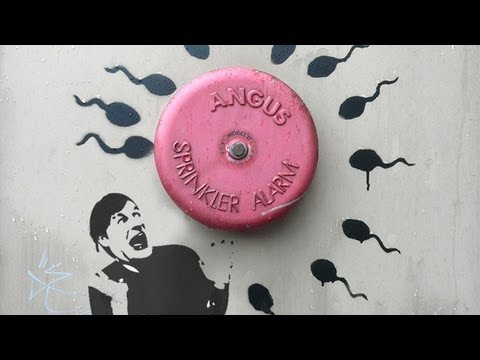
My reaction to the idea of semen
Via youtube.com
The first step was selecting a sperm bank. The sperm bank I chose was selected because of their large database of donors, their reviews, and the fact that they openly helped singles and LGBT would-be parents. Though, as is unfortunately typical, I noticed the cis normative practice of using the term “woman” and she/her pronouns at times to describe the person getting pregnant which ignores the reality that not everyone who gets pregnant identifies as a woman. The next step, selecting a donor, is where race became a factor in my parenthood journey again.
Among the many search criteria one could use in a donor search, from educational degrees to blood type, there was race. Initially when I started my donor search my only “must haves” were that the donor be agnostic/atheist (I felt we should agree on that fundamental world view at least) and that the donor be “open,” meaning that they were willing to be contacted by the child after age 18. I felt that my child should have, at least, the option of contacting their sperm donor if they felt the need. Having been, essentially, abandoned by my father as a child I knew what it was like to have certain curiosities about the person who contributed to half your genetic makeup but to have no way of getting answers and I didn’t want that for them. I also felt that, for me, having an open donor elicited none of the anxiety that fostering to adopt did. With fostering to adopt it could be two years before the adoption is finalized, during which time the birth parents could possibly regain custody; that’s too much uncertainty for too long. With an open donor neither the child nor the donor have any identifying information from one another until the child turns 18, and that would be only if the child chose to seek the donor out; that risk of getting to love the child only to lose them was basically not there in that situation.
Around that time I cut off all my chemically straightened hair, went natural, and begun working on undoing the damage that living in a white supremacist society had done to my self-image as a black woman. If I’m being fully honest, before I started reconnecting with myself as a black person, I didn’t want my donor to be black. The donor could be a light skinned PoC or white but not black. I figured that if my child were mixed they may end up with lighter skin and eyes which might confer a bit of light skin privilege to combat the disadvantages to being born to a brown skinned black queer woman. Plus, I thought that they would probably be prettier than they otherwise would be if they were fully black. I told you guys I had internalized some shit.
Cutting my hair had been the first step in shedding anti-black thoughts. Even though I hated going to the salon and hated the chemical burns I occasionally got on my scalp from relaxers, I had been hesitant on going natural. But why? I knew something had to be up in my brain because there was a lot of resistance to a seemingly simple solution. Why would I hesitate to avoid the long waits at the salon, the chatty hair technician who always talked about the men I’d attract with my new ‘do (no thanks), and save some money in the process? It took some time but I begrudgingly admitted to myself that I worried that my natural hair would be rough and nappy, that having such hair would make me unattractive to potential partners. I had been getting relaxers since I was ten and couldn’t remember what my natural texture was like, except that people always said that it was very thick. Once I realized that I had internalized such poisonous thoughts, I immediately vowed to turn my skeptical gaze on myself and to name and recognize any other internalized racism, and purge it from my being.
I started this process with Tumblr. I made a profile and only followed pages that made me happy (like cute babies of any species) or that spoke the truth (like critiquing power structures). If I reblogged an image it was only of lovely people of color, especially black women, that made me feel proud of my brown skin and kinky hair texture. Having black beauty normalized and reaffirmed like that bolstered my self-esteem as a brown black woman. To my surprise, my newfound appreciation for myself and my community quickly spread into making my blackness a central part of my identity, which included making black issues something I devote myself to as an activist. Along the way to self acceptance I realized that I had changed my mind about my donor. They needed to be at least a person of color, if not black. So now I had three criteria instead of two: the donor needed to be a PoC (preferably black), atheist/agnostic, and open. I started my search.
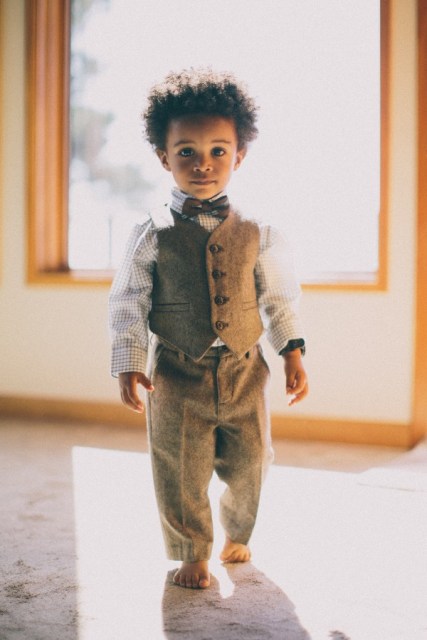
Seriously though, how could I have been biased against this adorableness?
Via pocinqueery.tumblr.com
I decided to start with race because I figured it would give me the biggest pool to start with which could be narrowed down with my other criteria. Imagine my surprise when the number of donors available dropped from 507 (the full list) to 12 when I searched for black donors. Only 12 donors on the whole list of 507 were black. Adding the “open” criteria brought the number down from 12 to 5. I knew that such a small pool of options would not work for me, so I would have to open up from only black donors to PoC donors. But, for curiosity’s sake, I added my last criteria of “agnostic” before giving up. I ended with 2 possible donors. That experience did make me wonder why the number of black donors was not more proportional to the general population.
After reading up on sperm donor qualifications and experiences I realized that the donation process itself may decrease feasibility for black donors to complete the process. Donors have to be able to make it to the bank at least once a week for six months to a year to deposit contributions, they have to abstain from ejaculating for three days before contribution days, and with some banks they are not paid until the end of the contract. Black populations are disproportionately affected by poverty and it seems obvious that poor folks might have difficulty securing weekly transportation to make it to the bank. Poor people would have a tough time making it to the bank when they’re open (bank hours are generally 9-5) without having to take off work. The fact that some donors are also only paid at the end of their six month to a year contract might also discourage donors to dedicate so much time and effort to the process when the payoff is so far away. Not being paid during the process might actually make it harder to see the process through until the end. I understood that the process was put in place to protect the health of the recipients and guarantee that the product would be up to appropriate standards but the rigors of the process meant that black donors, who were disproportionately likely to be affected by poverty, were more likely to be unable to meet the process requirements. It also meant that recipients of color often had fewer options if they wanted donors of their own race or ethnicity.
Widening my search to all open PoC agnostic donors gave me a much more manageable donor pool of 37. I looked for donors who seemed like people I’d be friends with in real life. They needed to seem queer friendly, anti-racist, and should not show signs of having a savior complex. They got bonus points for being explicitly feminist or pro-social justice. Anyone who seemed into critical thinking and skepticism also earned bonus points. I ended up jiving with five donors and decided to make my first financial investment. I purchased the childhood photos for the five donors so that I could see what they looked like (my bank does not include any photos in the free donor profile). Eventually I decided on a biracial lawyer who works with people who are treated unfairly, encourages his future offspring to question everything, and values his family very much. He’s quite the cutie! (for a guy.)
The sperm for my donor used to cost just over $700 per vial when I first picked him (recently the price rose to just over $800) and because I’m poor I knew I’d have to start saving immediately in order to be able to afford a few vials. I had already decided that it was in my best interest to buy at least five vials of sperm whenever I was ready to make the purchase. For one, it was more economical. If you bought five vials then the bank would give you a year of free storage. For two, I wanted to secure a small stock pile in case I didn’t get pregnant the first couple of tries. I set my savings goal at, at least, $100 per paycheck. Sometimes though if big unexpected expenses came up I missed my goal because I don’t make enough to absorb unexpected expenses *and* save a decent chunk of my check.
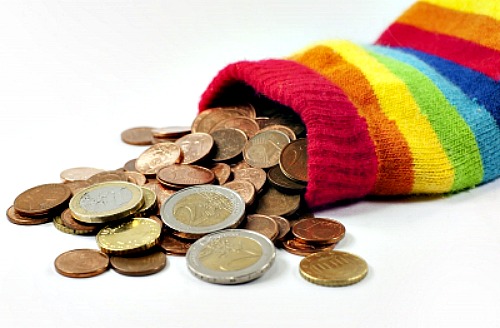
not my actual savings…my money storage device is not nearly that cool
Via lifeyourway.net
While doing research on other people’s experiences with sperm donation I read in a book, Knock Yourself Up, that if you couldn’t afford to buy one vial of sperm per month and pay the doctor’s office fees for insemination, that you couldn’t afford a baby. It gave me pause and made me wonder if I was too poor to have a kid. I wondered if I should wait. Then I realized that people who made less than me made it work so I probably could as well. If I waited until I felt certain that I made enough money I might never have a child. I had already done the work of securing a support system of people willing to help me and researched what kind of social support services I could turn to if the need arose. It would have to be enough. The idea that if one didn’t have $800-900 of disposable income per month they shouldn’t have kids is classist as hell anyway so fuck that noise.
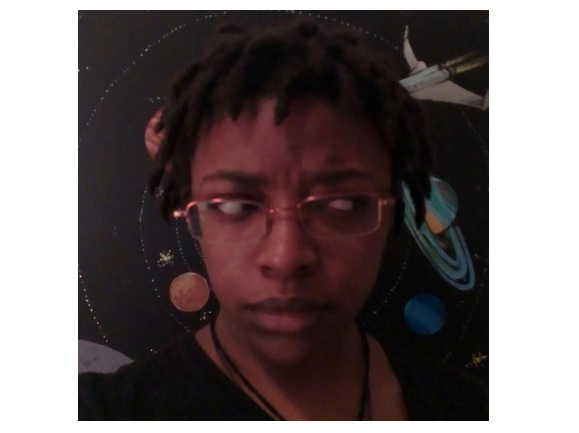
I’m skeptical of your classism
Actually, besides that one quote claiming one couldn’t afford kids without hella extra income, Knock Yourself Up was one of the better books on baby making while single. As I went in search of books that were relevant to my journey, books for singles using sperm donors, books about black experiences in pregnancy, and books on queer pregnancy, I found myself mostly disappointed by what I found. Besides the fact that it was hard to find books on those topics, especially books that were recently written, I found myself annoyed at the lack of intersectionality (thank you Kimberlé Crenshaw for coining such an excellent term). The books I found that addressed my needs as a black woman (talking about the racialized differences in treatment by care providers, unique pregnancy risks, and poorer maternal and fetal outcomes) were generally heteronormative. The books for single sperm recipients were more queer friendly generally but sometimes were a bit classist or racially biased. Queer-specific books often assumed readers were coupled and also were racially biased. Actually, unless it was a book specifically about PoC, all of the books had a bit of racial bias. Even seemingly small things, like the fact that the people on the cover are always white and very few of the families featured within the book were families of color, contributed to the sense of exclusion from the pregnancy and childbirth conversation. Carrie Murphy of the Mommyish blog has a really good article about this. Despite some difficulties, I did end up building a small stack of pregnancy and parenting books that were very inclusive and made me feel good about all the aspects of myself. I’ve also got a few more to look into.
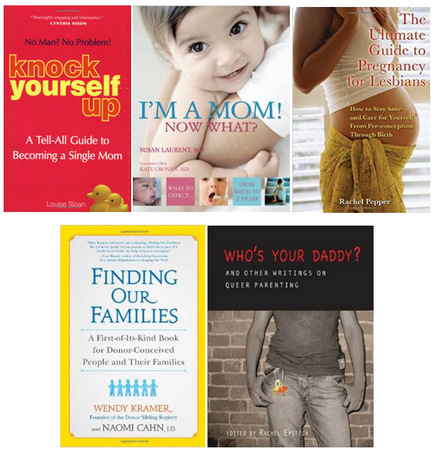
So this is the journey that led to me saving hundreds of dollars each month in the hopes of someday getting pregnant despite being squicked out by some aspects of pregnancy. I never thought this would be the path I’d chose for parenthood but amazingly I do think it’s the best fit for me, even if it wasn’t my first choice. I don’t need to appeal to white hetero folks in order to become a parent through pregnancy. Even though it’s hard to find resources that are inclusive enough to cover most aspects of my identity, those resources do exist whereas finding books on adoption written by PoC was basically impossible. Some days my anxiety makes me worry about whether I can financially weather having a kid and whether I’m capable of properly shoring up my kid from the racism and homophobia they’ll experience simply from being born into a black queer led family. Generally I’m optimistic, though; you have to be strong to survive in a society that’s not only not built for you but that actively disadvantages you at every turn, and I’ve survived this far. So maybe my pregnancy path isn’t as simple and straightforward as baby books would have you believe it should be because I’m a poor QPoC with anxiety, but it has been an interesting worthwhile journey so far. I can’t wait until I can take the next step. Just another year or so of saving money then I can buy my sperm and start in on trying to conceive.
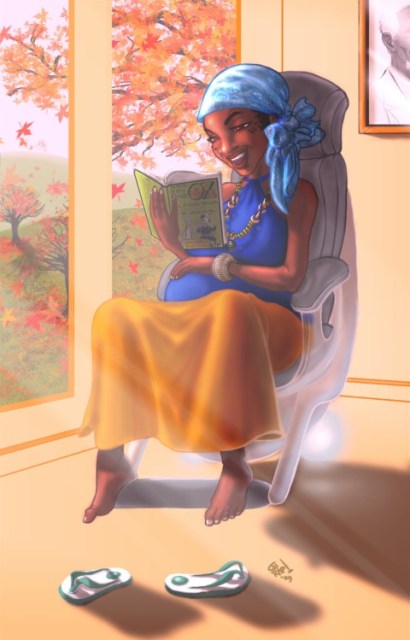
Future goals.
Via tumblr.com